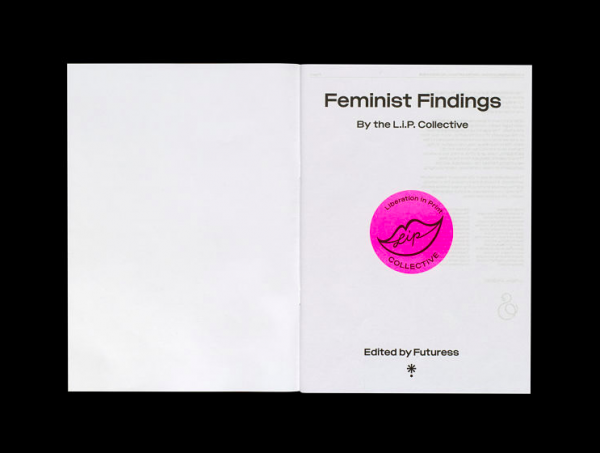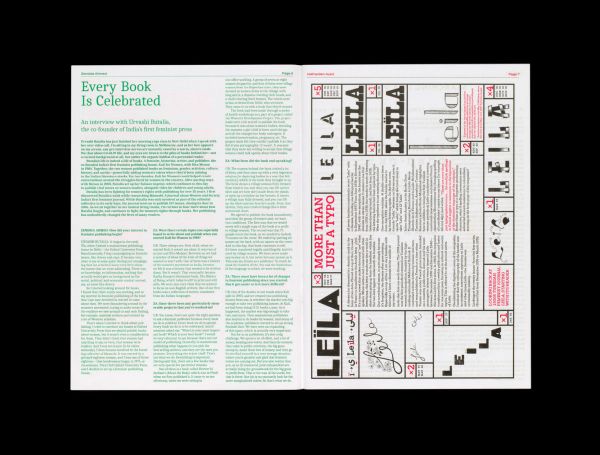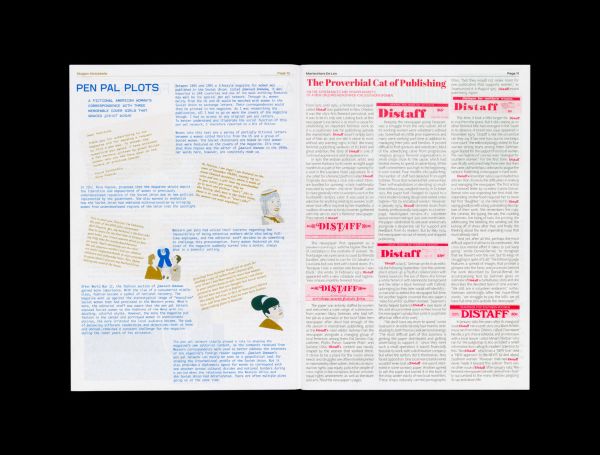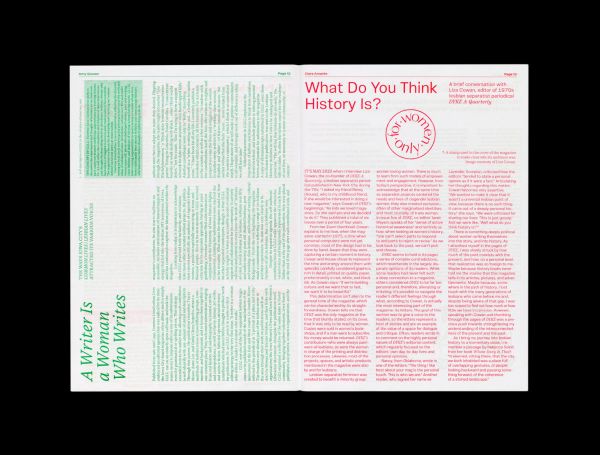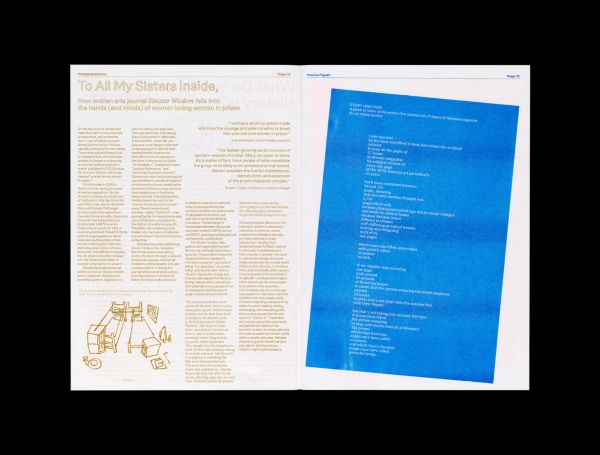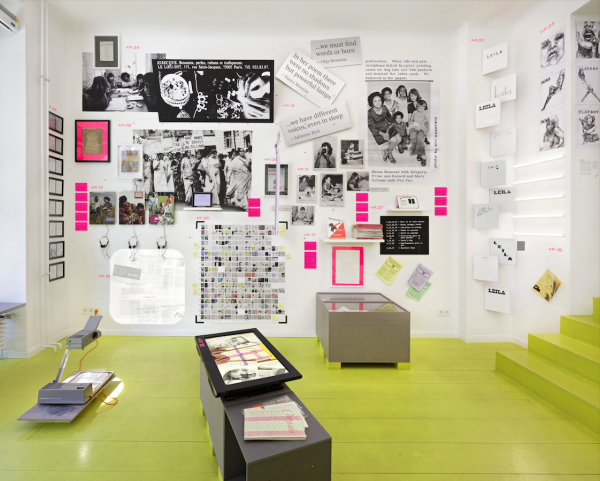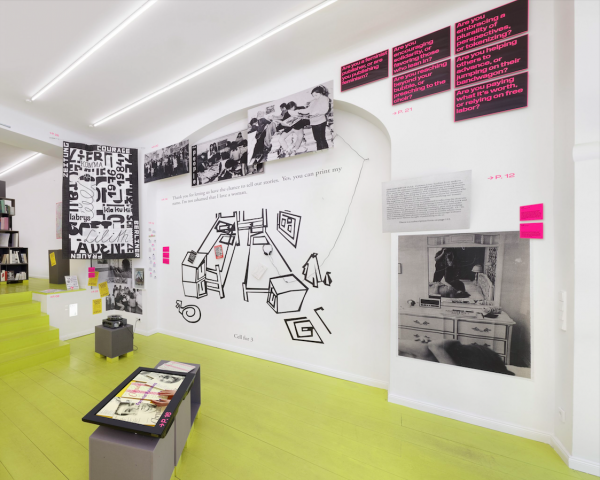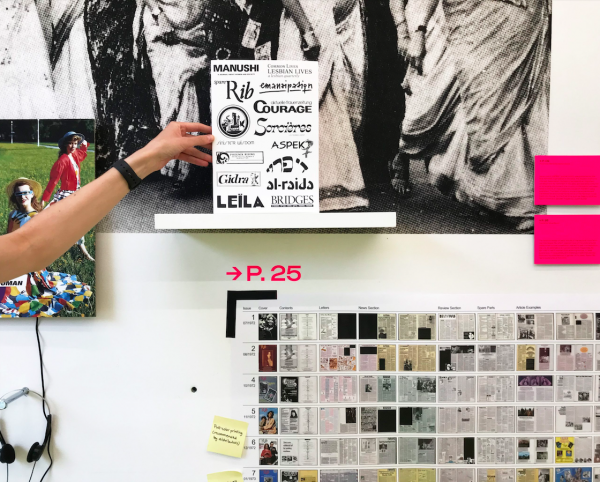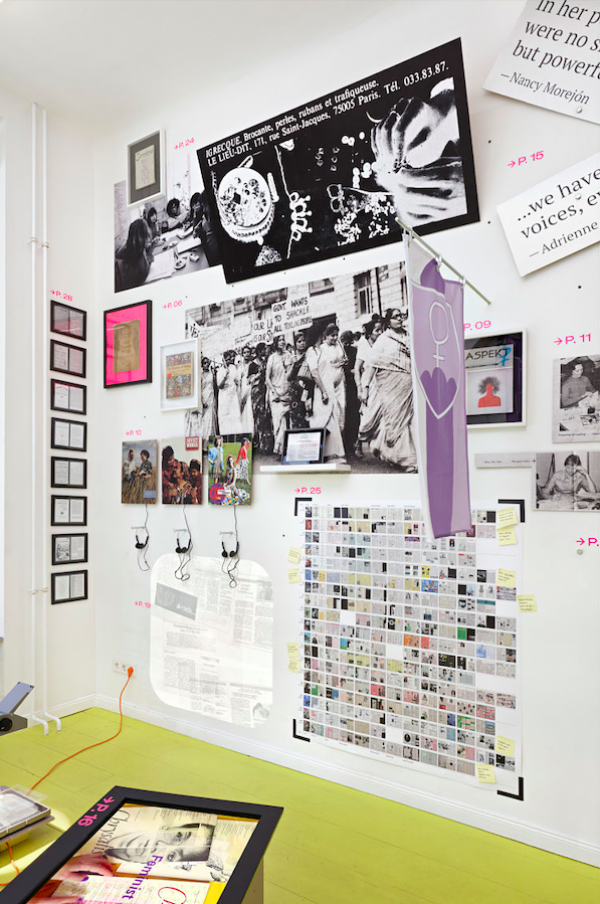Project Feminist Findings
Looking into the forgotten history of feminist publishing
Feminist Findings is a project which has produced a zine that reveals the unknown history of feminist publishing. It consists of a collection of stories from 26 women and non-binary people. The zine is edited and curated by Futuress, an online magazine and community platform setup by Corin Gisel and Nina Paim of the design research practice common-interest and journalist Madeleine Morley. The main goal of the authors was to rediscover the missing history of 20th-century feminist periodicals from around the world and make them known to a wider readership. Displayed on the cover of the zine is the mixture of logos from those periodicals.
This project started during lockdown and was originally a six-week online workshop that took place on four continents and in many time zones. The authors of Feminist Findings, the L.i.P. Collective aka Liberation in Print met via computer screen, each person working from home, with access to digital archives only, given that the libraries were closed. During the months marked by social distancing, the workshop participants had virtual meetings every Wednesday, working together to build the project. Individually, the authors searched for the missing feminist magazines, zines, and newspapers, and each wrote an essay.
All L.i.P. members designed the layout of their own page, a decision made in part to reflect the idea of a plurality of voices and perspectives. Presented in the risograph-printed zine, are a variety of colours and typefaces created by women and BIPOC type designers. A limited number of Feminist Findings zines was produced, and these are currently sold out. It is uncertain as to whether there will be a reprint or a second issue. However, if you do not possess a copy of the zine, the content is available on the Futuress website.
Another part of the project was an exhibition at Berlin’s A—Z gallery. They filled the space with collected visual fragments, photos, statements, logos, and magazines. These objects functioned as extended footnotes to the 23 articles authored by the L.i.P. members. “We conceived the exhibition as an extended, expanded, and exploded footnote of the zine,” says Futuress.
This collaborative journey, led by the L.i.P. Collective, is an example of stunning teamwork, producing a great form of storytelling about feminism in design practice. “Feminist research can be a lonely undertaking, so as the L.i.P. Collective, we wanted to create the space to support one another in our endeavours,” Futuress says. The editorial team of the Feminist Findings zine has analysed an exciting selection of historical publications that allow us to discover the path of this particular feminism movement. Perhaps common interest and collective cooperation is something that should unite us in revealing history to others.
license: Attribution-NonCommercial-ShareAlike

